St. Lucia |
|
|
|
| Übersicht – Contents: | |
St. Lucia |
|
|
|
| Übersicht – Contents: | |
Flaggen – Flags: |
|
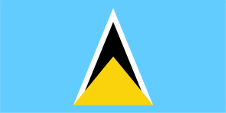 |
seit/since 2002, National-, Staats- und Handeslflagge – national, state and merchant flag, Seitenverhältnis – ratio 1:2, Quelle/Source, nach/by: Flags of the World   |
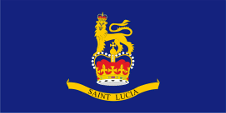 |
seit/since 1979, Flagge des Generalgouverneurs – flag of the Governor General, Seitenverhältnis – ratio 1:2, Quelle/Source, nach/by: Flags of the World |
historische Flaggen – historical Flags: |
|
|
|
|
St. Lucia – Saint Lucia: |
|
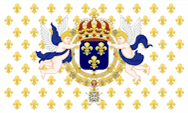 |
ab 1650, Flagge Frankreichs – flag of France, Quelle/Source, nach/by: Sodacan [CC BY-SA 3.0], via Wikimedia Commons  |
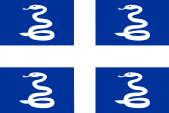 |
1766–1796,   |
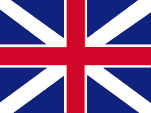 |
1664–1707, Flagge des Commonwealth von England, Schottland und Irland – flag of the Commonwealth of England, Scotland and Ireland, Quelle/Source, nach/by: Die Welt der Flaggen    |
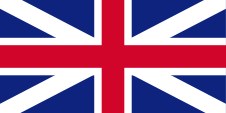 |
1707–1801, Flagge von Großbritannien – flag of United Kingdom, Quelle/Source, nach/by: Die Welt der Flaggen    |
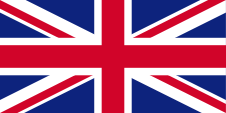 |
1801–1967, Union Flag → quasi Nationalflagge, Flagge von Großbritannien – flag of United Kingdom, Seitenverhältnis – ratio 1:2, Quelle/Source, nach/by: Wikipedia (EN)    |
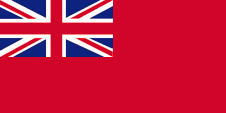 |
1864–1979, |
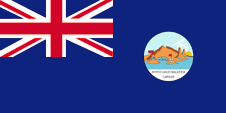 |
1875–1939, Flagge der Regierung (Staatsflagge) – flag of the government (state flag), Seitenverhältnis – ratio 1:2, Quelle/Source, nach/by: Flags of the World |
 |
1875–1939, Flagge des Administrators/Kommissars – flag of the Administrator/Commissioner, Seitenverhältnis – ratio 1:2, Quelle/Source, nach/by: Flags of the World |
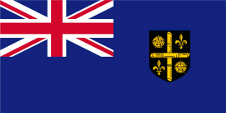 |
1939–1967, Flagge der Regierung (Staatsflagge) – flag of the government (state flag), Seitenverhältnis – ratio 1:2, Quelle/Source, nach/by: Flags of the World |
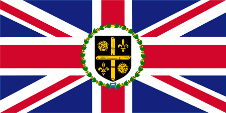 |
1939–1979, Flagge des Administrators/Kommissars – flag of the Administrator/Commissioner, Seitenverhältnis – ratio 1:2, Quelle/Source, nach/by: Flags of the World |
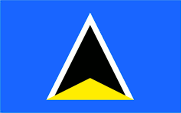 |
1967–1979, National- und Staatsflagge – national and state flag, Seitenverhältnis – ratio 5:8, Quelle/Source, nach/by: Flags of the World |
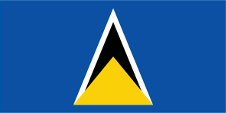 |
1979–2002, National-, Staats- und Handeslflagge – national, state and merchant flag, Seitenverhältnis – ratio 1:2, Quelle/Source, nach/by: Flags of the World, Wikipedia (EN) |
|
|
|
Windward-Inseln – Windward Islands (1833–1958): |
|
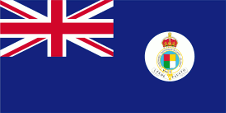 |
1886–1958, zweifelhaft – doubtful, Flagge der Regierung (Staatsflagge) – flag of the government (state flag), Seitenverhältnis – ratio 1:2, Quelle/Source, nach/by: Flags of the World |
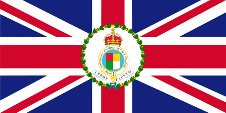 |
1886–1960, Flagge des Gouverneurs – flag of the Governor, Seitenverhältnis – ratio 1:2, Quelle/Source, nach/by: Flags of the World |
|
|
|
Westindische Föderation – Federation of the West Indies (1958–1962): |
|
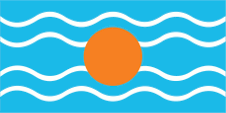 |
Flagge der Westindischen Föderation – flag of the Federation of the West Indies, Seitenverhältnis – ratio 1:2, Quelle/Source, nach/by: Flags of the World |
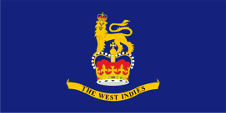 |
Flagge des Generalgouverneurs – flag of the Governor General, Seitenverhältnis – ratio 1:2, Quelle/Source, nach/by: Flags of the World |
|
Die Flagge von St. Lucia
wurde – in ihrer Grundform – am 01.03.1967 für den assoziierten Staat
eingeführt, und mit Erlangung der Unabhängigkeit am 22.02.1979 offiziell
übernommen. Sie wurde von dem einheimischen Künstler Dunstan St. Omer
entworfen und zeigt drei aufeinanderliegende Dreiecke in den Farben Gelb
(heute: Orange/Gold), Schwarz und Weiß, auf blauem (heute: himmelblauem)
Grund. Das Blau repräsentiert den Himmel und das Meer, das Dreiecksmuster
die aus ihm aufsteigende Insel; eine stilisierte Darstellung des aus dem
Meer aufsteigenden Doppelgipfel der beiden kegelförmigen Vulkane Gros Piton
und Petit Piton an der Südwestküste des Landes. Gelb steht für Sonnenschein,
Sandstrände und Wohlstand, während das Schwarz einerseits auf den
vulkanischen Ursprung des Inselstaats verweist, andererseits stehen Weiß und
Schwarz für die beiden Bevölkerungsgruppen. Bei Erlangung der Unabhängigkeit
(1979) wurde der Aufbau der Flagge geringfügig geändert. Sie hat ab diesem
Jahr das Format 1:2 und der stilisierte Berg ist spitzer und steiler, so
dass sie heute im Seitenverhältnis 1:2 erscheint. Vorher betrug das
Seitenverhältnis 5:8. Seit dem Jahre 2002 wird ein wesentlich helleres Blau
(Himmelblau) als Farbe des Flaggentuchs verwendet. Die Farben sind
wahrscheinlich nicht definiert. Anfänglich war die Insel zwischen Frankreich und England/Großbritannien umstritten. Im Pariser Frieden von 1814, bekam Großbritannien die Insel offiziell zugesprochen, so das ab jenem Jahr die Flagge von Großbritannien unangefochten über den Inseln wehte, die zwischen 1838 und 1958 administrativ zur britischen Kolonie der Windward-Inseln gehörte. Die Windward-Inseln waren Teil des United Kingdom, hatten eine eigene Verwaltung und einen eigenen Gouverneur. An Land, bis 1864 auch zur See, repräsentierten der einzelne Bürger und auch die Behörden ihren Status als Bürger oder Organe des United Kingdom, durch die Verwendung des Union Jack, "Union Flag" genannt. Großbritannien hatte in Jahr 1864 ein Flaggensystem eingeführt, in dem: • Kriegsschiffe einen sogenannten "White Ensign" (Marineflagge), eine weiße Flagge oft mit durchgehendem roten Georgskreuz und mit dem Union Jack in der Oberecke, • Handelsschiffe einen "Red Ensign" (auch "Civil Ensign" → Bürgerflagge genannt, die eigentl. Handelsflagge), eine rote Flagge mit dem Union Jack in der Oberecke, und • Dienstschiffe einen "Blue Ensign" (Regierungsflagge → die eigentliche Staatsflagge), eine blaue Flagge mit dem Union Jack in der Oberecke führten. Seit 1865 durften Schiffe von Kolonialregierungen einen Blue Ensign mit einem Badge (Abzeichen) im fliegenden Ende verwenden. Für alle anderen Zwecke war ab diesem Zeitpunkt an Land ausschließlich der britische Union Jack zu verwenden und zur See die übliche rote britische Handelsflagge, der "Red Ensign". Wenn die britische Admiralität der Kolonie die entsprechende Erlaubnis erteilt hatte, durften Handelsschiffe und private Seeleute dieser Kolonien einen Red Ensign mit dem Bagde führen. Dies war für die Windward-Inseln nicht der Fall. Die jeweiligen Regierungen sollten entsprechene Bagdes zur Verfügung stellen. Ein solches Badge war oft eine auf einer Scheibe platzierte regionale landschaftliche Darstellung, zeigte oft Schiffe, historische Begebenheiten oder konnte auch nur eine Art Logo sein. Sehr oft zeigte ein Badge zusätzlich den Namen des Landes oder auch einen Wahlspruch. Einige Besitzungen hatten aber auch schon von Anfang an ein Wappen, bzw. erhielten über die Jahre eine eigenes Wappen und das Badge wurde abgeschafft. Um ein weitgehend einheitliches Erscheinungsbild im fliegenden Ende der Flaggen zu gewährleisten, wurden Wappen und auch andere Symbole auf einer weißen Scheibe in der Größe der früheren Badges dargestellt. Es gab hier aber auch Ausnahmen, denn einige Kolonien verwendeten diese weiße Scheibe nicht, und platzierten ihr Wappen oder auch nur das Wappenschild - manchmal auch vergrößert - direkt auf das Flaggentuch. Schon in den 40-er Jahren wurde dazu übergegangen die weißen Scheiben zu entfernen und das Wappen direkt zu platzieren oder vergrößert dazustellen. Dieser Umstellungsprozess erfolgte allmählich, nirgendwo gleichzeitig und vollständig. In einigen britischen Besitzungen sind bis heute Flaggen mit der weißen Scheibe in Gebrauch, in anderen nicht mehr und in einigen Gebieten gibt es beide Varianten nebeneinander. Die Windward-Inseln erhielten im Jahre 1886 ein eigenes Badge. Es zeigte einen vierfach geteilten Schild mit den Farben Rot, Gelb, Grün und Weiß, umgeben von einem weißen Gurt mit der Inschrift "Governor in Chief, Windward Islands", oberhalb die britische Krone. Unterhalb ein weißes Spruchband mit dem Motto der Inseln: "i pede fausto" → "Gehe mit gesegnetem Fuß". Die einzelnen Kolonien der Windward-Inseln führten jedoch ihre eigenen "Blue Ensigns" mit einem eigenen Badge, lediglich der Gouverneur nutzte das Badge auf seiner Flagge. Ein "Blue Ensign" für die Windward-Inseln könnte dennoch existiert haben. Von 1875 bis 1939 verwendete die Regierung von St. Lucia, als britische Kolonie, die blaue britische Dienstflagge (Blue Ensign) mit einem Badge im wehenden Teil der Flagge. Das Badge zeigte auf einer Scheibe ein Bild der Soufriére-Bucht mit vier ankernden Schiffen und die beiden kegelförmigen Vulkane Gros Piton und Petit Piton. Unterhalb das damalige Motto der Insel: "Statio haud malefida carinis" → "Bei Schiffen ist Stillstand nichts Schlechtes". Zwischen 1939 und 1967 wurde als Badge das Wappenschild der Kolonie auf der Dienstflagge (Blue Ensign) verwendet. Gleichzeitig war die Kolonie von 1958 bis 1962 Teil der Britischen Kolonie "Westindische Föderation", ein Versuch die Verwaltung zusammenzufassen und auch den Unabhängigkeitsbestrebungen der zugehörigen Inseln und Kolonien entgegenzuwirken. Die Flagge der "Westindische Föderation" war ein hellblaues Flaggentuch mit vier waagerechten weißen Wellenlinien und einer goldenen Scheibe in der Mitte. Sie symbolisierte die Sonne über der Karibischen See. Über den Farbton des Blau ist man sich im Zweifel, es wird oft das übliche Britische Heraldikblau angenommen. Eine Zeitgenössische Beschreibung nennt jedoch ein "kaiserliches Blau" was Hellblau wäre und auch viele zeitgenössische Drucke zeigen dieses helle Blau. Am 27.02.1967 wurde von Großbritannien die innere Selbstverwaltung gewährt, und St. Lucia wurde ein autonomer, mit Großbritannien assoziierter Staat. In diesem Zusammenhang wurde die heutige Flagge eingeführt, welche die Tradition der "Blue Ensigns" beendete. |
The flag of Saint Lucia
was introduced – in its basic form – on 1st of March in 1967 for the
associated state, and officially adopted on 22nd of February in 1979 when
independence was achieved. It was designed by the local artist Dunstan St.
Omer and shows three superimposed triangles in the colours yellow (today:
orange/gold), black and white on a blue (today: cerulean blue) background.
The blue represents the sky and the sea, the triangular pattern the island rising out of it; a stylised representation of the twin peaks of the two cone-shaped volcanoes Gros Piton and Petit Piton on the south-west coast of the country. Yellow symbolises sunshine, sandy beaches and prosperity, while the black refers to the volcanic origins of the island state on the one hand and white and black stand for the two population groups on the other. When independence was gained in 1979, the design of the flag was changed slightly. From this year onwards, it has the ratio 1:2 and the stylised mountain is more pointed and steeper, so that today it appears in an ratio of 1:2. Since 2002, a much lighter blue (cerulean blue) has been used as the colour of the flag bunting. The colours are probably not defined. Initially, the island was disputed between France and England/United Kingdom. In the Peace of Paris of 1814, United Kingdom was officially awarded the island, so that from that year onwards the flag of United Kingdom flew unchallenged over the islands, which between 1838 and 1958 belonged administratively to the British colony of the Windward Islands. The Windward Islands were part of the United Kingdom, had their own administration and their own governor. On land, and until 1864 also at sea, individual citizens and the authorities represented their status as citizens or bodies of the United Kingdom by using the Union Jack, known as the Union Flag. United Kingdom had introduced a flag system in 1864 in which: • Warships use a so-called "White Ensign" (naval flag), a white flag often with a red St. George's cross throughout and with the Union Jack in the upper corner, • Merchant ships use a so-called "Red Ensign" (also called "Civil Ensign" → citizen flag, the actual merchant flag), a red flag with the Union Jack in the upper corner, and • Governmental ships use a "Blue Ensign" (flag of the government → the actual state flag), a blue flag with the Union Jack in the upper corner. Since 1865, colonial government ships were permitted to use a Blue Ensign with a badge in the flying end. From this point on, only the British Union Jack was to be used for all other purposes on land and the usual red British merchant flag, the "Red Ensign", at sea. If the British Admiralty had granted the appropriate permission to one colony, merchant ships and private sailors from this colony were allowed to use a Red Ensign with the Bagde. This was not the case for the Windward Islands. The respective governments should provide appropriate bagdes. Such a badge was often a regional landscape representation placed on a disk, often showed ships, historical events or could just be a kind of logo. Very often a badge also showed the name of the country or a motto. However, some possessions had a coat of arms right from the start, or received their own coat of arms over the years and the badge was abolished. In order to ensure a largely uniform appearance in the flying end of the flags, coats of arms and other symbols were displayed on a white disk the same size as the earlier badges. But there were exceptions here, as some colonies did not use this white disk and placed their coat of arms or just the shield – sometimes enlarged – directly on the flag cloth. As early as the 1940s, the white discs were removed and the coat of arms was placed directly or enlarged. This transition process occurred gradually, never simultaneously and completely. In some British possessions flags with the white disc are still in use, in others they are no longer used and in some areas both variants exist side by side. The Windward Islands were given their own badge in 1886. It showed a shield divided into four parts with the colours red, yellow, green and white, surrounded by a white belt with the inscription "Governor in Chief, Windward Islands", with the British crown above. Below a white banner with the motto of the islands: "i pede fausto" → "Walk with a blessed foot". However, the individual colonies of the Windward Islands had their own "Blue Ensigns" with their own badge; only the governor used the badge on his flag. A "Blue Ensign" for the Windward Islands may nevertheless have existed. From 1875 to 1939, the government of Saint Lucia, as a British colony, used the blue British official flag (Blue Ensign) with a badge in the waving part of the flag. The badge showed a picture of Soufriére Bay with four anchored ships and the two cone-shaped volcanoes Gros Piton and Petit Piton on a disc. Below, the island's motto at the time: "Statio haud malefida carinis" → "With ships, standing still is not a bad thing". Between 1939 and 1967, the shield of the colony's coat of arms was used as a badge on the official flag (Blue Ensign). At the same time, the colony was part of the British colony "West Indian Federation" from 1958 to 1962, an attempt to consolidate the administration and also to counteract the independence efforts of the associated islands and colonies. The flag of the "West Indian Federation" was a light blue flag with four horizontal white wavy lines and a golden disc in the middle. It symbolized the sun over the Caribbean Sea. There is some doubt about the color of the blue; it is often assumed to be the usual British heraldry blue. However, a contemporary description calls it an "imperial blue" which would be light blue and many contemporary prints also show this light blue. On 27th of February in 1967, internal self-government was granted by United Kingdom and Saint Lucia became an autonomous state associated with United Kingdom. In this context, the current flag was introduced, which ended the tradition of the "Blue Ensigns". |
| Quelle/Source: Die Welt der Flaggen, Flaggen Wappen Hymnen, Flags of the World, Wikipedia (EN), Volker Preuß | |
Wappen – Coat of Arms: |
|
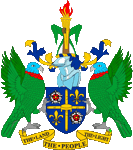 |
seit/since 1979, Wappen von St. Lucia – coat of arms of Saint Lucia, Quelle/Source: Corel Draw 4 |
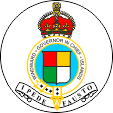 |
1886–1958, Windward-Inseln – Windward Islands, Badge (Abzeichen) – Badge, Quelle/Source, nach/by: Flags of the World |
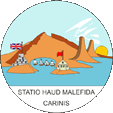 |
1875–1939, Saint Lucia, Badge (Abzeichen) – Badge, Quelle/Source, nach/by: Flags of the World |
 |
1939–1967, Saint Lucia, Wappenschild und Badge – Escutcheon and badge, Quelle/Source, nach/by: Flags of the World |
| Das Staatswappen wurde am 16.08.1939 verliehen, und mehrfach verändert; Am 01.03.1967, als St. Lucia ein assoziierter Staat wurde, und am 22.02.1979, als St. Lucia die Unabhängigkeit erlangte. Der Wappenschild ist geteilt durch ein schwebendes Kreuz aus Bambus, in den Quartieren zwei Rosen und zwei Lilien, die auf die britische und französische Kolonialherrschaft in der Vergangenheit verweisen. Als Schildhalter fungieren links und rechts des Schildes zwei grüne Papageien. Über dem Schild ein europäischer Helm mit einer üppigen Helmzier. In der Mitte, auf dem Helm, ein Menschenarm mit einer Fackel. Unterhalb des Wappenschildes das Spruchband mit dem Staatsmotto: "The Land, the People, the Light" → "Das Land, das Volk, das Licht". | The coat
of arms of the state was awarded on 16th of august in 1939, and was several
changed; On 1st of march in 1967, when Saint Lucia gets an associated state,
and on 22nd of february in 1979, as Saint Lucia achieves the independence. The blazon is divided by a suspended cross from bamboo, in the quarters two roses and two lilies, which refer for the British and French colonial reign in the past. As shield holders officiate to the left and on the right of the shield two green parrots. Above the shield a European helmet with a abundant helmet ornamentation. In the middle, on the helmet, a human arm with a torch. Below the blazon the motto ribbon with the motto of the state: "The Land, the People, the Light". |
| Quelle/Source: Die Welt der Flaggen, Flaggen Wappen Hymnen, Wikipedia (EN), Volker Preuß | |
Landkarte – Map: |
Lage – Position: |
Landkarte des Landes – Map of the Country: |
|
|
| Zahlen und Fakten – Numbers and Facts: | |
|
|
|
|
|
|
|
|
|
|
|
|
|
|
|
|
|
|
|
wahrscheinliche Möglichkeiten der Entdeckung der Insel: 1499 · der spanische Seefahrer Juan de la Cosa entdeckt die Insel und nennt sie "El Falcon" 13. Dezember 1502 · der spanische Seefahrer Christoph Kolumbus entdeckt die Insel und nennt sie "Isla de Santa Lucia", die Insel wurde Spanischer Besitz, jedoch nicht kolonisiert 13. Dezember 1502 · am Gedenktag der Heiligen Lucia von Syrakus erleidet ein französischer Segler Schiffbruch, die überlebende Besatzung nennt die Insel nach der Heiligen Lucia ("Sainte Lucie"), dieser Tag ist heute der Nationalfeiertag 1600 · für
einige Jahre niederländischer Stützpunkt |
| probable
possibilities of the discovery of the island: 1499 · the Spanish seafarer Juan de la Cosa discoveres the island and names it "El Falcon" 13th of December in 1502 · the Spanish seafarer Christoph Columbus discovers the island and names it "Isla de Santa Lucia", the island becomes a Spanish possession but was not colonized 13th of December in 1502 · at the day of the Holy Lucia of Syracus shipwrecks a French sailing vessel, the survived crew names the island by the Holy Lucia ("Sainte Lucie"), that day is today the national holiday 1600 · for
some years Dutch base |
| Quelle/Source: Atlas zur Geschichte, World Statesmen, Wikipedia (EN) |
| Den Namen "St. Lucia" erhielt diese Insel entweder von Kolumbus oder von französischen Schiffbrüchigen am Tag der Heiligen Lucia im Jahre 1502 verliehen. | The name
"Saint Lucia" was awarded to this island by Columbus or by shipwrecked French sailors on the day of Saint Lucy in the year 1502. |
| Die Heilige Lucia lebte in etwa zwischen 285 und 310 in Syrakus auf Sizilien. Sie starb einen grausamen Märtyrertod für ihren Glauben. Sie gilt als die Patronin des Lichtes. | Holy Saint Lucy ca. between the years 285 and 310 in Syracus on Sicily. She died a dreadful martyr-death for her religion. She is the patron of the light. |
| Quelle/Source: Wikipedia (EN) | |